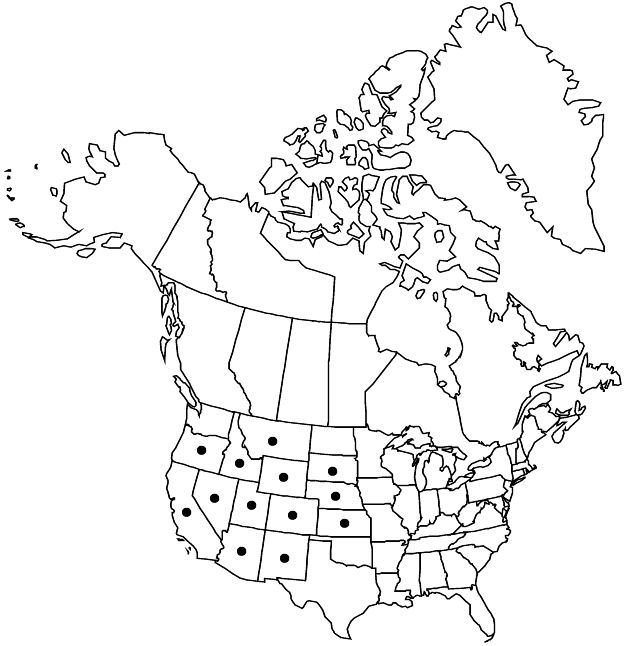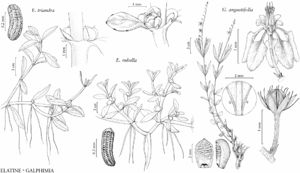Elatine rubella
Mem. New York Bot. Gard. 1: 260. 1900.
Herbs, emergent on wet substrates, 1–6 (–16) cm. Stems ascending or prostrate, branched. Leaves reddish green; stipules lanceolate, 0.5–0.6 mm, margins dentate, apex acute; petiole 0.5–1 (–3) mm; blade oblong-lanceolate, 3–8 × (0.5–) 1–2 (–2.2) mm, base attenuate to rounded, apex obtuse to slightly emarginate. Pedicels 0–0.5 mm, erect. Flowers: sepals (2–) 3, if 2, equal, if 3, 1 smaller, oblong-ovate or widely lanceolate, 1–1.5 × 1–1.5 mm; petals 3, pinkish white to reddish, elliptic or ovate, 1–1.5 × 0.5 mm; stamens 3; styles 3. Capsules oblong-ovoid, 3-locular, 1.5–2.5 mm diam. Seeds 10–20 (–30) per locule, narrowly oblong, straight or curved to 15°, 0.5–0.7 × 0.1–0.3 mm; pits angular-hexagonal, length 1–2 times width, in 8–10 rows, 16–25 (–30) per row.
Phenology: Flowering summer.
Habitat: Muddy shores, shallow vernal pools, ditches, rice fields.
Elevation: 0–2900 m.
Distribution

Ariz., Calif., Colo., Idaho, Kans., Mont., Nebr., Nev., N.Mex., Oreg., S.Dak., Utah, Wyo.
Discussion
Reports of Elatine rubella from southern British Columbia and Washington are based on misidentifications of E. brachysperma and E. chilensis, respectively.
Selected References
None.
